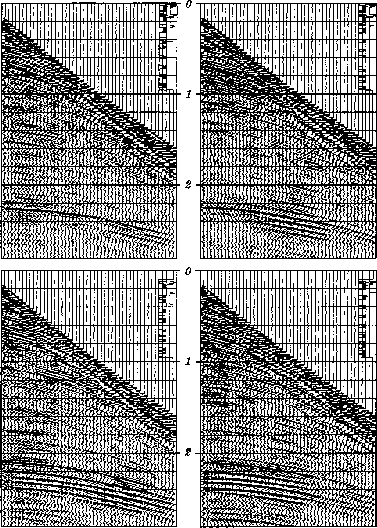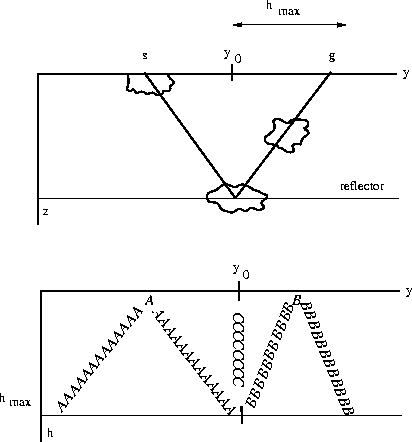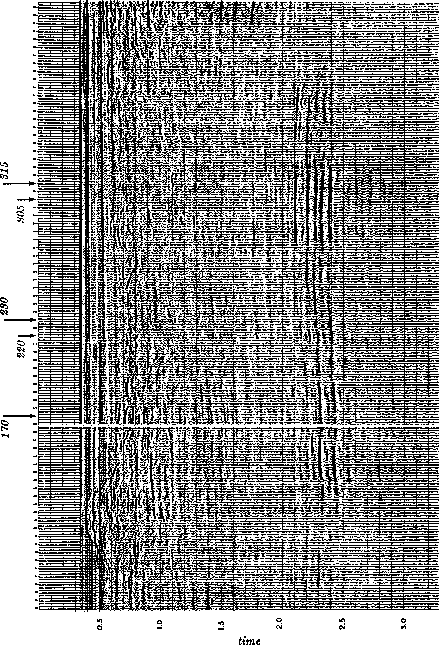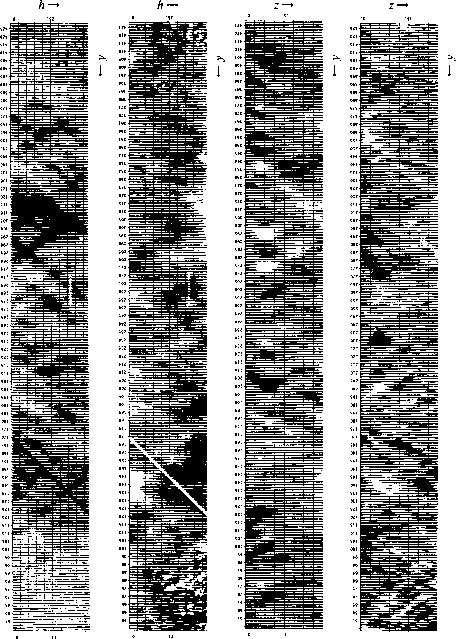




Next: About this document ...
Up: Claerbout: Everything depends on
Previous: COOPERATION ACROSS DISCIPLINES
The primary reference for Kjartanson's results is his doctoral
dissertation available as SEP report 23.
Electronically,
this thesis is at
http://sepwww.stanford.edu/theses/sep23/
A ``digested'' version of the thesis is in chapter 4 of my textbook IEI at
http://sepwww.stanford.edu/oldreports/sep40/
The particular section is available in html at
http://sepwww.stanford.edu/sep/prof/iei/ofs/paper_html/node6.html
kjcmg
Figure 1
Top left is shot point 210; top right is shot point 220.
No processing has been applied to the data except
for a display gain proportional to time.
Bottom shows shot points 305 and 315.
The AVO is too large for realistic layered media models
and it changes rapidly from one midpoint to another one nearby.

kjidea
Figure 2
Kjartansson's model. The model on the top
produces the disturbed data space sketched below it.
Anomalous material in pods A, B, and C may be detected
by its effect on reflections from a deeper layer.
Midpoint is y. Offset is h.

kjcos
Figure 3
A constant-offset section across the Grand Isle gas field.
The offset shown is the fifth from the near trace. (Kjartansson, Gulf)
Notice that anomalous amplitudes
are not limited to thin ``reservoir thickness'' zones.
They tend to expand over the time axis.
Notice a missing trace.

kja
Figure 4
(a) amplitude (h,y), (b) timing (h,y)
(c) amplitude (z,y), (d) timing (d,y)
The missing trace anomaly shows up exactly at a 45 degree angle.
Other anomalies are at lessor angles
indicating their nonzero depth.






Next: About this document ...
Up: Claerbout: Everything depends on
Previous: COOPERATION ACROSS DISCIPLINES
Stanford Exploration Project
4/19/1999



